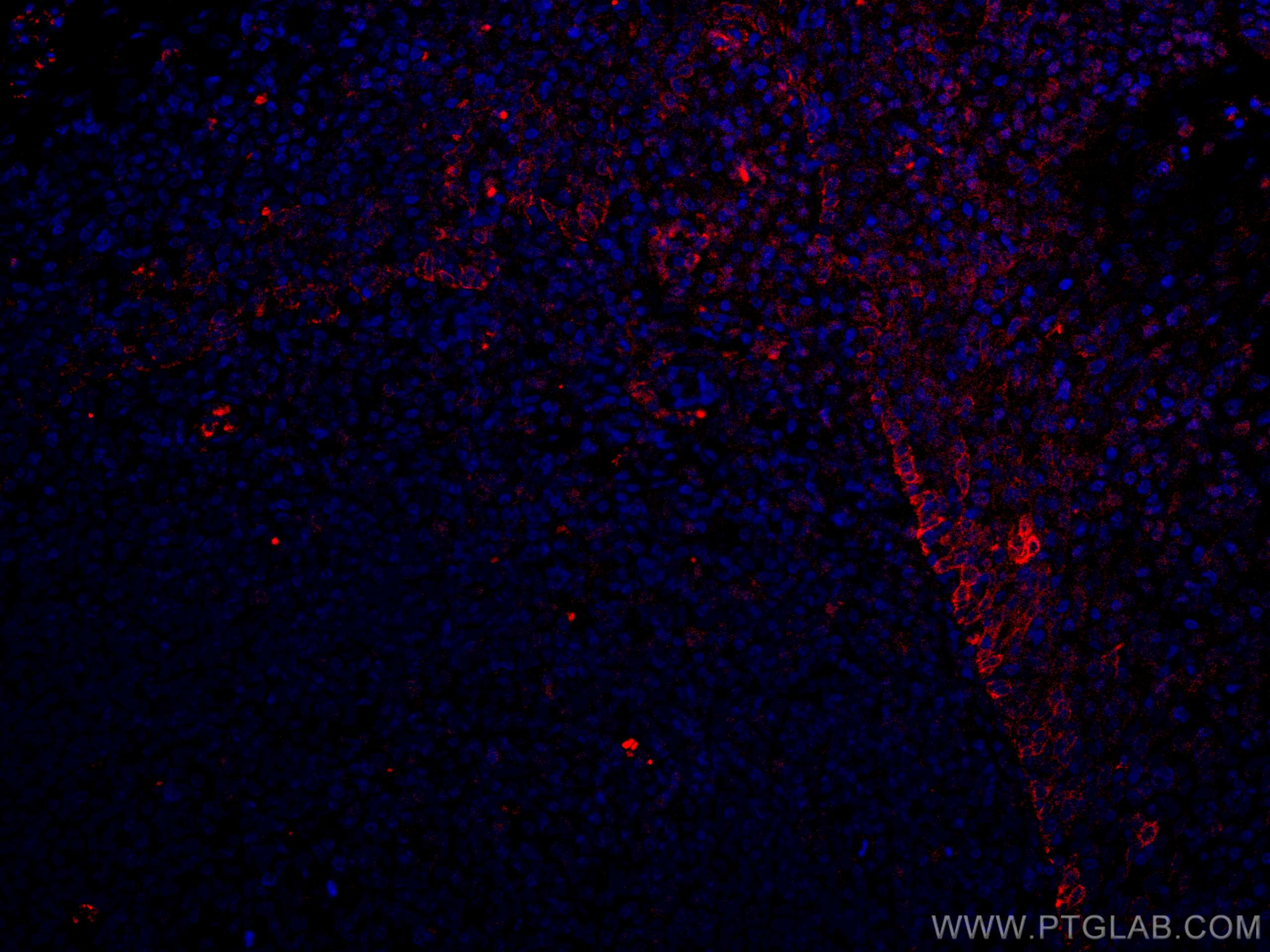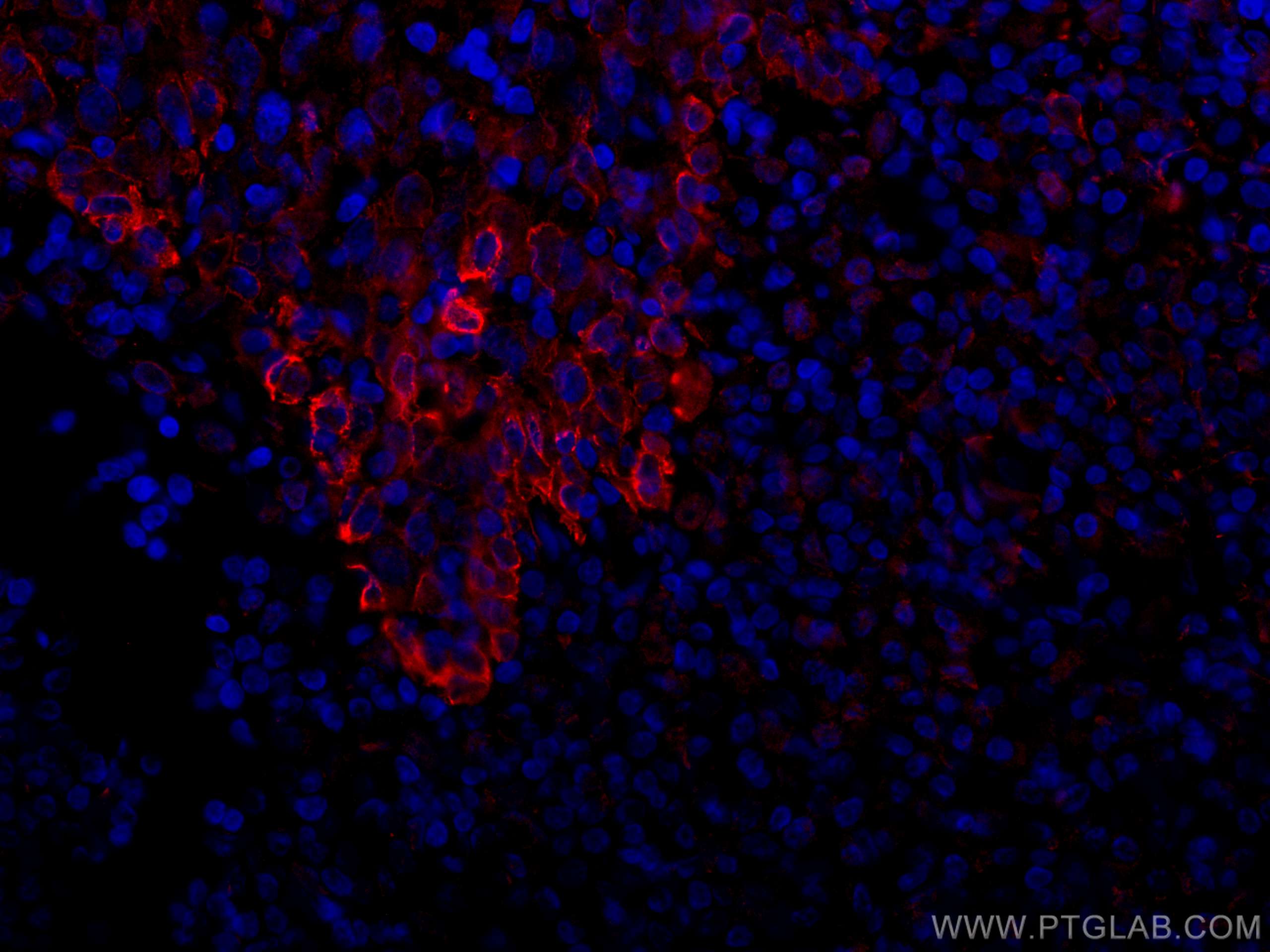Tested Applications
| Positive IF-P detected in | human tonsillitis tissue |
Recommended dilution
| Application | Dilution |
|---|---|
| Immunofluorescence (IF)-P | IF-P : 1:50-1:500 |
| It is recommended that this reagent should be titrated in each testing system to obtain optimal results. | |
| Sample-dependent, Check data in validation data gallery. | |
Published Applications
| IF | See 1 publications below |
Product Information
CL594-67317 targets TLR8 in IF-P applications and shows reactivity with Human samples.
| Tested Reactivity | Human |
| Cited Reactivity | mouse |
| Host / Isotype | Mouse / IgG1 |
| Class | Monoclonal |
| Type | Antibody |
| Immunogen |
CatNo: Ag16566 Product name: Recombinant human TLR8 protein Source: e coli.-derived, PET28a Tag: 6*His Domain: 261-610 aa of BC101075 Sequence: FNAPFPCVPCDGGASINIDRFAFQNLTQLRYLNLSSTSLRKINAAWFKNMPHLKVLDLEFNYLVGEIASGAFLTMLPRLEILDLSFNYIKGSYPQHINISRNFSKLLSLRALHLRGYVFQELREDDFQPLMQLPNLSTINLGINFIKQIDFKLFQNFSNLEIIYLSENRISPLVKDTRQSYANSSSFQRHIRKRRSTDFEFDPHSNFYHFTRPLIKPQCAAYGKALDLSLNSIFFIGPNQFENLPDIACLNLSANSNAQVLSGTEFSAIPHVKYLDLTNNRLDFDNASALTELSDLEVLDLSYNSHYFRIAGVTHHLEFIQNFTNLKVLNLSHNNIYTLTDKYNLESKSL Predict reactive species |
| Full Name | toll-like receptor 8 |
| Calculated Molecular Weight | 1041 aa, 120 kDa |
| Observed Molecular Weight | 120 kDa |
| GenBank Accession Number | BC101075 |
| Gene Symbol | TLR8 |
| Gene ID (NCBI) | 51311 |
| RRID | AB_2920112 |
| Conjugate | CoraLite®594 Fluorescent Dye |
| Excitation/Emission Maxima Wavelengths | 588 nm / 604 nm |
| Form | Liquid |
| Purification Method | Protein G purification |
| UNIPROT ID | Q9NR97 |
| Storage Buffer | PBS with 50% glycerol, 0.05% Proclin300, 0.5% BSA, pH 7.3. |
| Storage Conditions | Store at -20°C. Avoid exposure to light. Stable for one year after shipment. Aliquoting is unnecessary for -20oC storage. |
Background Information
Toll-like receptors (TLRs) are a group of pathogen recognition receptors (PRRs) that can be divided into two subfamilies depending on their subcellular localization(PMID: 32268138). Toll-like receptor 8 (TLR8), a sensor for pathogen-derived single-stranded RNA (ssRNA), binds to uridine (Uri) and ssRNA to induce defense responses (PMID:30535046). TLR8 proteins were expressed in spleen, epididymal sperm, testicular sperm cells, and Leydig cells but were weak in Sertoli cells. It can identify two isoforms,120 and 122 kDa.
Protocols
| Product Specific Protocols | |
|---|---|
| IF protocol for CL594 TLR8 antibody CL594-67317 | Download protocol |
| Standard Protocols | |
|---|---|
| Click here to view our Standard Protocols |






